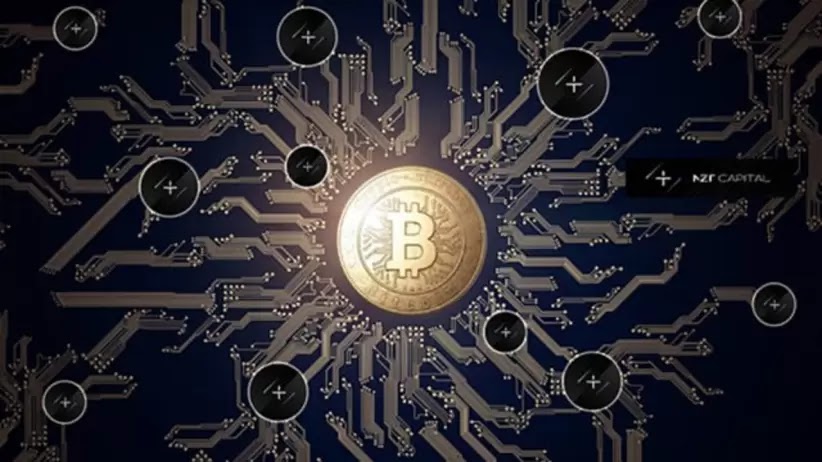From donations to terrorist groups, operations in the darknet and incursions in the drug market.
In August 2020, an investigation between the Federal Bureau of Investigation (FBI), the Office of Homeland Security Investigations (HSI) and the Criminal Investigation Division of the Internal Revenue Service (IRS-CI) achieved the largest seizure of cryptocurrencies in the story: $1 million from Al Qaeda and the al-Qassam Brigades, Hamas's military arm .
Terrorists have adopted blockchain and fundraising techniques via Telegram or Facebook, as well as cryptocurrency platforms: Al Qaeda used Bitcoin Transfer, a platform based in Idlib, Syria.
According to data from Chainalysis, a blockchain analysis company, this platform hosted addresses of terrorist groups to receive and launder donations from their followers through social networks. But this is not only happening with hidden exchanges in the Middle East, but also with well-known platforms: Binance has reportedly prosecuted $2.4 billion in hacking, investment fraud, and illegal online drug sales, according to a Reuters investigation published in June. 2022.
For its part, Chainalysis said in 2020 that Binance reportedly received $770 million in criminal funds in 2019 alone, more than any other such platform.
When consulted by Forbes on the subject, the director of Binance for Latin America, Maximiliano Hinz, denied this information, assuring that "we were the first exchange in the world that required all users to have their accounting, that is, a person needs to have your identity verified to be on the platform.”
According to the executive, this restricts the possibilities of money laundering and financing of terrorism, since it allows them to know the identity of 100% of their users. However, some wallets included in the platform have been seized by authorities from different countries, including Colombia.
An example to understand: a 'paper' wallet where an invisible drug trafficker has US$1 million in the Tether stablecoin, which is bought in El Salvador and which complied with all the regulations of that country, would end up being a deposit for the criminal and would be registered on the blockchain. Would there be an alert? Not at the beginning.
The delegate for Criminal Finance of the Attorney General's Office, Luz Ángela Bahamón, explained to Forbes that, as it is the first transaction that is executed in that wallet, it joins the many operations that occur daily in the blockchain. As long as there is no alert or indicative, there is no way to establish the volume of the illicit.
“The protocols that one currency or another may have can limit the tracking and traceability of resources. At the same time, what we have to do is always go forward through the achievement of forensic tools that allow us to gradually remove those rules and those protocols to facilitate our work, "added the official.
severity level
Crypto crime hit an all-time high in 2021 at $14 billion. The figure grew 79% compared to the US$7.8 billion registered in 2020, according to Chainalysis.
However, looking at the total crypto industry ($15.8 trillion in 2021, 567% more than 2020 totals), it is clear that legitimate use of cryptocurrency is growing more than criminal activity. Chainalysis analysts were quick to state that the share of illicit activity in cryptocurrency transaction volume “has never been lower.” Transactions with illicit addresses accounted for just 0.15% of cryptocurrency transaction volume in 2021, despite the gross value of illicit trading volume reaching its highest level ever.
Care must be taken, as the figure may increase as more addresses associated with illicit operations are identified. “Since it is a surreptitious activity, it is difficult to establish the total universe of actors that make it up and the transaction volume,” Bahamón clarified.
Blockchain technology contains the traceability of all operations. If transactions are made to wallets previously identified as risky, or owned by a person who has been identified as a criminal through other investigative work, an alert could be issued.
Given this scenario, it is not surprising that the darknet markets set a new income record in 2021, contributing a total of US$2.1 billion in cryptocurrencies. Of that total, some $300 million was generated by fraud shops, which were involved in the sale of stolen logins, credit cards, and exploit kits, etc. The rest, more than US$1.8 billion, was generated by markets focused on the drug.
An FBI spokesperson explained to Forbes Colombia that dark web criminals need secure and reliable ways to pay for illicit goods and services online. As such, virtual assets remain the preferred method of exchanging value in illicit online markets, with bitcoin being the most popular.
But while the FBI's mandate implies existing federal laws, it refers back to duly constituted authorities in regulatory policy. For this reason, authorities such as the Financial Action Task Force (FATF) consider a global response that includes crypto service providers to be essential.
“Countries need to understand that cryptocurrencies are not limited by physical borders, so they must ensure that digital asset companies can identify, trace and, when necessary, freeze crypto assets,” commented a spokesperson for the FATF to Forbes.
The alternatives
Tracking big criminals and quantifying their possessions from a public database is one of the main differences between cryptocurrency-based and cash-preferred crime. While in the latter, higher net worth criminals have networks of foreign banks and shell corporations to hide their holdings, cryptocurrency transactions are stored on the blockchain and visible to all.
Thus, the authorities can continue with the seizures and bring those responsible to justice; but, the financial system still has a lot to learn: although the blockchain is a new front in money laundering, there are many 'traditional' methods to launder money.
“Believe it or not, in traditional banking, jewelry, real estate and sectors such as construction, etc. are above it. The cryptos do have their participation and their risk, but what differentiates them from cash is traceability, ”said the product director of the Mexican exchange Bitso, Jose Luis González Birlain.
Thus, when the law acts, the victims of crypto crime are restituted, because the idea that cryptocurrency is an untraceable asset is refuted.
How much cryptocurrency is currently in the hands of criminals and therefore could be seized by technical investigative bodies? According to analysts at Chainalysis, the answer is a function not just of cryptocurrency-based crime revenue in 2021 globally, but of all-time criminal revenue that still has visible addresses.
The actors in the conflict already have a clear picture, and despite the fact that the tools to combat it are just beginning to be discovered, actions in the international arena are already charting a path that not only demystifies the rumors that have been generated around the industry of digital assets, but have helped to unravel, little by little, the dark side of cryptocurrencies.






Post a Comment